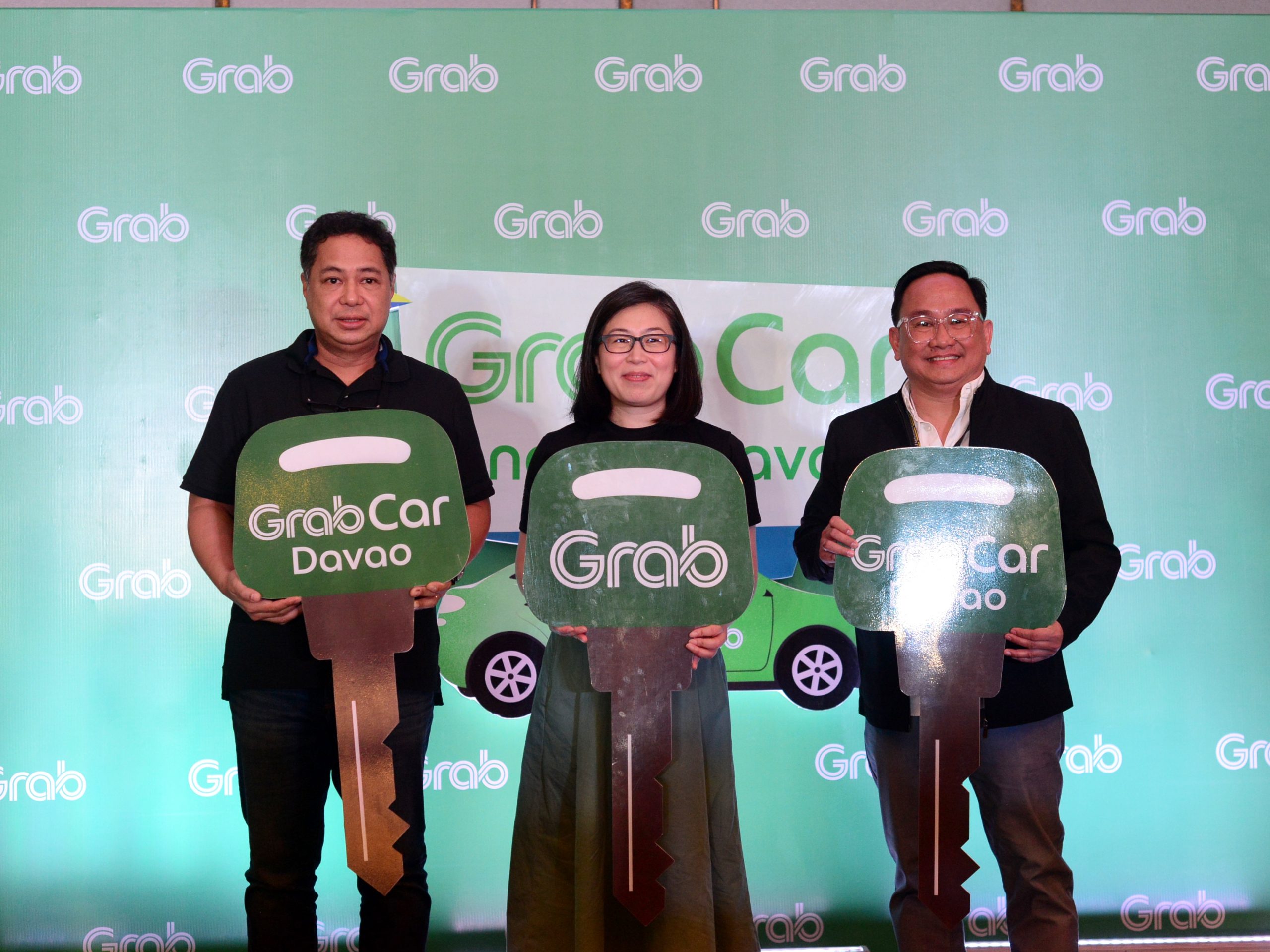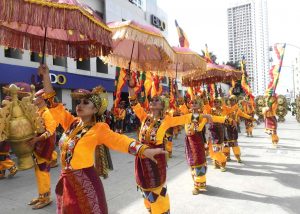- Prominent ride-hailing service to help ease transport peak-hour burdens
ABOUT 200 GrabCar units are set to fully serve Davao City before the month ends to alleviate the perennial transportation headaches for commuters, especially during peak hours.
Grab Philippines country head Grace Vera Cruz formally introduced the flagship mobility service in a grand event at Dusit Thani on Friday afternoon, Oct. 13. The launch was also attended by Vice Mayor J. Melchor Quitain and Land Transportation Franchising Regulatory Board XI regional director Nonito Llanos III, and former LTFRB chair Martin Delgra.
However, commuters already managed to try the ride-hailing service using the Grab app for weeks now.
Vera Cruz estimates about 130-140 GrabCar units presently operating in the city. However, the number of destinations is still limited to downtown areas, northern areas of Davao in Lasang, and south in Toril and Calinan.
“The launch of GrabCar in Davao is a milestone not of our journey alone but our collective journey towards a future intertwined with shared prosperity, unity, and inclusive progress,” Vera Cruz said.
Davao is the third major city that Grab Philippines penetrated, after Metro Manila in 2012 and Cebu City in 2016.
“Davao really is the heart of Mindanao, and we want to pay homage to that so Davao has to be the first official GrabCar city in the whole of Mindanao,” she added.
Vera Cruz said that apart from bringing the commuters to their destination, GrabCar assures the safety of the commuting public through its “track your ride” feature. This feature enables commuters to share their ride details with their family and relatives and keep them up to date.
“Halimbawa you are going to the north but then your grab car goes to south for some reason, someone will pin you, the app mismo will say, “Are you okay” because we own our maps,” she added.
Passengers may also customize their ride where they can select the “quiet ride” feature. For instance, they prefer to not have chats with the drivers while traveling.
One of the notable features of GrabCar is its promotion of “no fare shock” as once the passenger has placed their pick-up and drop-off area in the city, the app automatically computes the fares at a fixed rate.
“The amount that you see in the app is the fare that will appear before booking the ride. If you feel that the book is too high, then you can opt not to book the ride. If may driver na humingi ng extra, please report it to us,” Vera Cruz added.
Grab Philippines cited the study conducted by the Mindanao Development Authority which found that 70% of the residents in Mindanao face challenges in safe and reliable transportation access. Through its expansion in the city and partnerships with local operators, it aims to bridge the gap between economic activities and overall connectivity.
For his part, Llanos reiterated that the transport sector is an economic driver, and he acknowledged the contribution of Grab for the modernization program of the government to public transport.
“Let us remember that the tagline of Davao is Davao Life is here and in the transportation sector especially on our end as providers of public utility vehicles, we want to make sure that life is really here in Davao through our public transport,” Llanos said.
“We wanted to give the most convenient and most comfortable ride for the people of Davao,” he added.
Llanos said that 171 units have been given franchises out of 200 slots as recommended by the local government. However, LTFRB XI is eyeing to add more units considering the 600 pending applications filed in their office, who wanted to be part of the Grab community.
“We will stop at the number 200 but it doesn’t mean to say that we will not add. That would depend on the study which is being undertaken by our office right now in collaboration with the LTFRB central office,” he added.
Llanos said the study seeks to determine the absorptive capacity of Davao City to welcome GrabCar without necessarily compromising the earnings of the local taxi drivers. Presently, there are about 5,600 taxi units in the city.




